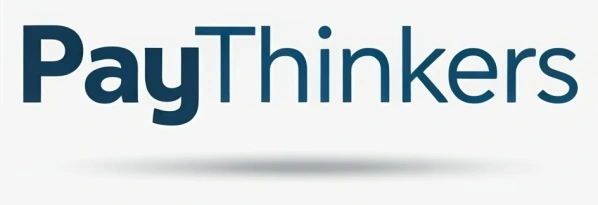ISO 20022 — the universal financial industry message scheme — is an open global standard for exchanging financial information. It is rapidly replacing legacy ISO 15022 and other proprietary message formats worldwide. Unlike earlier standards, ISO 20022 provides consistent, structured, and data-rich messages that can be applied across all types of financial business transactions.
In this article, we explore the current adoption, upcoming deadlines, and what the future holds for ISO 20022.
SWIFT CBPR+ Migration
The Cross-Border Payments and Reporting Plus (CBPR+) roadmap, developed by SWIFT, outlines the phased migration from legacy MT messages to ISO 20022 standards for financial institution-to-financial institution (FI-to-FI) cross-border payments.
- Initiation: Migration began in March 2023, initially covering payment instructions.
- Coexistence: MT and ISO 20022 will coexist until November 2025, after which certain MT messages will be rejected (NAK’ed) or converted via contingency processes with additional fees.
- Postal Addresses: Starting with SR 2025(November 2025), a hybrid option for postal addresses was introduced, with unstructured formats allowed only during a one-year grace period. From SR 2026(November 2026), unstructured addresses will be rejected.
-
Exceptions & Investigations (E&I): By November 2026, receiving camt.110 through Case Management becomes mandatory. By November 2027, institutions must send and receive camt.110/111, and payment cancellation messages will only be exchanged over FINplus.
- Ancillary Messages: By November 2027, messages such as pain.002, camt.029, and camt.055 for payment initiation and status reporting must be adopted.
- Statements & Reporting: Migration is planned to conclude in November 2028, subject to adoption progress. Direct debits and charges follow the same timeline, while cheques remain on coexistence until further notice.
- Tracker Updates: MT-based updates will be supported only until November 2026, after which institutions are encouraged to use the Tracker API.
This roadmap emphasizes mandatory receipt capabilities, bilateral agreements for formatting and reconciliation, and continuous industry collaboration. Institutions are strongly encouraged to engage early with their counterparties and leverage SWIFT’s Knowledge Centre for detailed guidance.
Source: SWIFT Migration Roadmap – https://www.swift.com/swift-
Real-Time Payments
ISO 20022 is rapidly becoming the global standard for real-time payment systems, offering standardized, data-rich, and interoperable transactions. Its adoption improves:
- Efficiency through streamlined processing.
- Transparency with richer information for reconciliation.
- Interoperability across markets and infrastructures.
While not all real-time payment platforms have fully migrated, many major infrastructures have either adopted or are actively transitioning. This global movement is key to building a more harmonized and efficient payment ecosystem.
Card Systems
Card networks are also embracing ISO 20022 to complement — and eventually move beyond — the limitations of ISO 8583, the long-standing standard for card transactions.
ISO 8583’s fixed format and limited data fields restrict modern use cases such as advanced fraud detection and personalized customer experiences. ISO 20022, in contrast, supports richer and more flexible data structures.
Visa, Mastercard, and other major networks are gradually introducing ISO 20022-based messaging in new services and infrastructures. While full adoption will take time due to widespread legacy dependencies, this shift is central to the modernization of digital payments, enhancing fraud prevention, efficiency, and customer experience.
The Road Ahead
The long-term vision is clear: ISO 20022 will become the universal standard for financial messaging.
So far, much of the migration has been “like-for-like”, where legacy MT messages are simply mapped to MX equivalents. This approach allows compliance within tight deadlines but doesn’t fully exploit the capabilities of ISO 20022. The true benefits will come only with end-to-end adoption, extending across:
- Customer channels and interfaces
- Middleware and integration layers
- Core banking and downstream systems
- Counterparty, market infrastructure, and central bank communication
Such holistic adoption will unlock the full richness of ISO 20022: enhanced analytics, more efficient straight-through processing, improved compliance, and innovation in customer services.
SWIFT and regulators continue to evolve ISO 20022. For example, the mandatory shift from unstructured to structured addresses by November 2026 is designed to improve automation, regulatory screening, and data quality. This illustrates that ISO 20022 is not a one-off migration but an ongoing journey of standardization and enhancements.
Opportunities Beyond Compliance
The structured and granular data enabled by ISO 20022 will be a catalyst for innovation:
- Fraud & Financial Crime Prevention: Improved data analytics and pattern recognition.
- Customer Experience: Faster dispute resolution, richer reconciliation, and personalized services.
- New Business Models: Leveraging data for value-added services not possible under legacy formats.
Conclusion
The benefits of ISO 20022 can only be fully realized when financial institutions are ready end-to-end — not just at the messaging layer but across systems, processes, and business models.
Are your systems prepared for this transformation? Do you want to explore ISO 20022 further and understand where it is headed? Get in touch with us to learn how we can help.
Let’s Talk
Let’s connect, fast-track journey in ISO adoption and innovate together.


